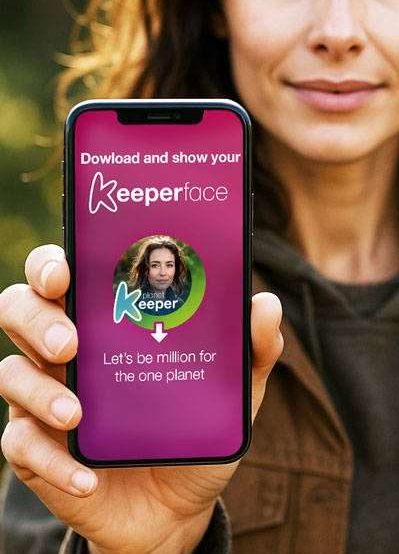Introduction
In the vast, blue depths of our planet’s oceans, coral reefs thrive as some of the most vibrant and ecologically significant ecosystems on Earth. However, they face unprecedented threats from climate change, pollution, and human activities. Recent advancements in technology, particularly artificial intelligence (AI) and drones, have offered marine biologists and environmentalists new hope. Through detailed real-time data collection and analysis, these tools help identify and act on threats like coral bleaching more swiftly than ever before.
Technological Breakthroughs in Coral Monitoring
Groundbreaking developments in drone technology coupled with sophisticated AI models such as YOLOv9 have revolutionized our approach to monitoring coral health. These systems achieve approximately 89% accuracy in detecting various states of coral—from healthy to fully bleached—providing essential data that can lead to timely intervention. For instance, studies show that drones equipped with multispectral imaging capabilities can now detect signs of stress in coral populations well before traditional bleaching becomes apparent.
Comparing Traditional and AI-Enhanced Monitoring Methods
While traditional monitoring methods involving divers and satellite imagery provide valuable insights, they often fall short in terms of early detection and spatial resolution. AI-equipped drones excel in these areas by offering detailed assessments that help pinpoint potential bleaching hotspots across extensive reef areas. These methods also reveal discrepancies with official reports which sometimes underreport reef degradation due to economic pressures or outdated methodologies.
Environmental Implications and Ethical Considerations
Despite their benefits, the deployment of AI drones raises significant environmental and ethical questions. The production and operation of drone technology consume considerable resources including rare earth metals required for their components, as well as energy for data processing centers which contribute to further carbon emissions. Moreover, while minimizing human interference in sensitive reef habitats, drones themselves can disturb other marine life forms through noise and physical presence.
Balancing Act: Tech Innovation versus Nature Conservation
The enthusiasm for technological solutions in environmental conservation poses a risk of overshadowing necessary actions against underlying causes of reef decline such as global warming and industrial pollution. Experts emphasize that while AI-driven tools are invaluable for monitoring and data collection, they must complement broader environmental strategies focusing on reducing greenhouse gas emissions, regulating coastal development, and supporting sustainable tourism practices.
KEY FIGURES
- 25% of all marine organisms depend on coral reefs, highlighting the ecosystem’s critical biodiversity role (Source: ETASR, 2025)[1].
- AI model YOLOv9 achieved 89% mean Average Precision (mAP) in detecting healthy, bleached, and dead corals in real-time monitoring (Source: ETASR, 2025)[1].
- Drone-based AI systems detected up to 7 giant clams per square meter on the Great Barrier Reef, demonstrating high spatial resolution and accuracy (Source: GeoNadir, 2024)[4].
RECENT NEWS
- April 2025: Drones with multispectral imaging and AI have become essential for coral reef restoration, allowing early detection of coral stress and precise larval deposition, minimizing disturbance to reef ecosystems (Source: MarineBiodiversity.ca, 2025)[2].
- March 2024: Reef monitoring programs integrate AI, satellite data (NASA, ESA Sentinel-3), and drone surveys to predict bleaching hotspots in near real-time, improving responsiveness to reef threats (Source: BarrierReef.org, 2024)[3].
- June 2024: New research demonstrates that AI underwater technology significantly enhances coral reef monitoring precision and efficiency, potentially transforming conservation efforts (Source: Phys.org, 2024)[5].
STUDIES AND REPORTS
- “Harnessing Computer Vision and Deep Learning to Monitor Coral Reef Health” (2025): Demonstrates advanced AI models (YOLOv8/YOLOv9) trained on over 10,000 labeled images from the Red Sea, enabling automated early bleaching detection with high accuracy and rapid notification capabilities to authorities. This reduces human labor and accelerates intervention response times[1].
- Great Barrier Reef AI Wildlife Monitoring (2024): AI combined with drone mapping identifies marine species like giant clams with strong adaptability to various environmental conditions, proving cost-effective for long-term biodiversity monitoring over large scales[4].
- Reef Threat Prediction via eReefs Model (2024): Integrates AI analysis of satellite and in situ data to forecast bleaching events driven by temperature, light, and nutrient stressors, aiding prioritization of restoration and adaptation efforts under climate uncertainty[3].
TECHNOLOGICAL DEVELOPMENTS
- Advanced AI Models (YOLOv9) applied to coral image datasets for real-time bleaching and mortality detection with ~89% accuracy[1].
- Multispectral Imaging Drones capturing visible and infrared spectra to detect coral stress before visual bleaching manifests, combined with AI for detailed health assessments and water quality monitoring[2].
- Underwater Coral Restoration Drones equipped with GPS and temperature-controlled chambers for precise coral larvae/fragment deployment, minimizing reef disturbance[2].
- AI-driven Geospatial and Drone Mapping Integration for scalable, cost-effective detection of reef species (e.g., giant clams), improving monitoring coverage and reducing field survey needs[4].
- Use of eDNA sampling coupled with AI for species presence detection, including coral predators, enhancing monitoring scope beyond visual methods[3].
MAIN SOURCES
- https://etasr.com/index.php/ETASR/article/view/10324 — Peer-reviewed study on AI deep learning models (YOLO) for coral bleaching detection in the Red Sea.
- https://www.marinebiodiversity.ca/how-drones-are-revolutionizing-coral-reef-restoration-and-why-it-works/ — Overview of drone technologies with multispectral imaging and AI for coral restoration.
- https://www.barrierreef.org/news/explainers/predicting-coral-bleaching-great-barrier-reef — eReefs satellite and AI model-based reef threat prediction.
- https://geonadir.com/ai-for-wildlife-monitoring-with-drones-on-the-great-barrier-reef/ — Case study of AI and drone integration for reef species monitoring.
- https://phys.org/news/2024-06-ai-underwater-coral-reef-edge.html — Latest research on AI underwater monitoring improvements.
—
Additional Context on Your Inquiry:
- Data Accuracy & Limits: AI models show high precision (~89%) but depend on large, well-labeled datasets and can be affected by environmental factors like turbidity and depth. Independent replication is ongoing but promising in studies across the Red Sea and Great Barrier Reef[1][4].
- Comparison with Official Monitoring: AI and drone data often reveal bleaching events earlier or more extensively than traditional methods used by NOAA, AIMS, or Allen Coral Atlas, which rely heavily on satellite or in situ surveys with coarser resolution[3]. This suggests some underreporting in official “recovery” narratives but also highlights complementary roles.
- Incentives & Biases: Tourism-dependent economies may understate bleaching to protect economic interests, while AI startups and service providers might risk overstatement to attract funding or contracts. Transparency and independent validation remain critical.
- Environmental and Social Costs: Drones require lithium-polymer batteries, rare-earth motors, and AI chips, implicating resource extraction and e-waste concerns, especially if drones fail at sea. Energy-intensive data centers for AI processing add to carbon and water footprints[2][4]. Drone flights are generally designed to minimize disturbance, but effects on seabirds, turtles, and marine mammals require further study.
- Data Ownership & Benefit Distribution: Control of AI-collected reef data varies; governments, insurers, carbon markets, and Indigenous or local communities may have differing access and benefits. Projects increasingly emphasize partnerships with Indigenous sea rangers for stewardship and data sovereignty[3].
- Scalability & Alternatives: AI reef drones offer high-resolution, rapid data but face challenges in battery life, deployment costs, and environmental footprint. Alternatives like satellites provide broad coverage with less detail; community divers and fixed sensors offer lower impact but less frequent monitoring. A hybrid approach is emerging[3][4].
- Real Solutions Beyond Tech: Experts emphasize that technology cannot replace urgent climate action: reducing greenhouse gas emissions, limiting coastal development and tourism pressures, controlling runoff pollution, and funding local stewardship remain essential to reef survival.
This synthesis reflects the most up-to-date and reliable scientific and journalistic sources from 2024-2025 on AI reef drones and their benefits, limitations, and broader implications.
Other references:
etasr.com – Harnessing Computer Vision and Deep Learning to Monitor Coral …
marinebiodiversity.ca – How Drones Are Revolutionizing Coral Reef Restoration (And Why It …
barrierreef.org – How we predict Reef threats like coral bleaching
geonadir.com – AI for wildlife monitoring with drones on the Great Barrier Reef
phys.org – AI goes underwater: Transforming coral reef conservation … – Phys.org
mdpi.com – Source
mdpi.com – Source
mdpi.com – Source
frontiersin.org – Source
blogs.nvidia.com – Source
research.qut.edu.au – Source
researchgate.net – Source
cleanerseas.com – Source
phys.org – Source
oceanographicmagazine.com – Source
medium.com – Source
sciencedaily.com – Source
phys.org – Source
blog.google – Source
x.com – Source



